编制机构:雅昌艺术市场监测中心(AMMA)
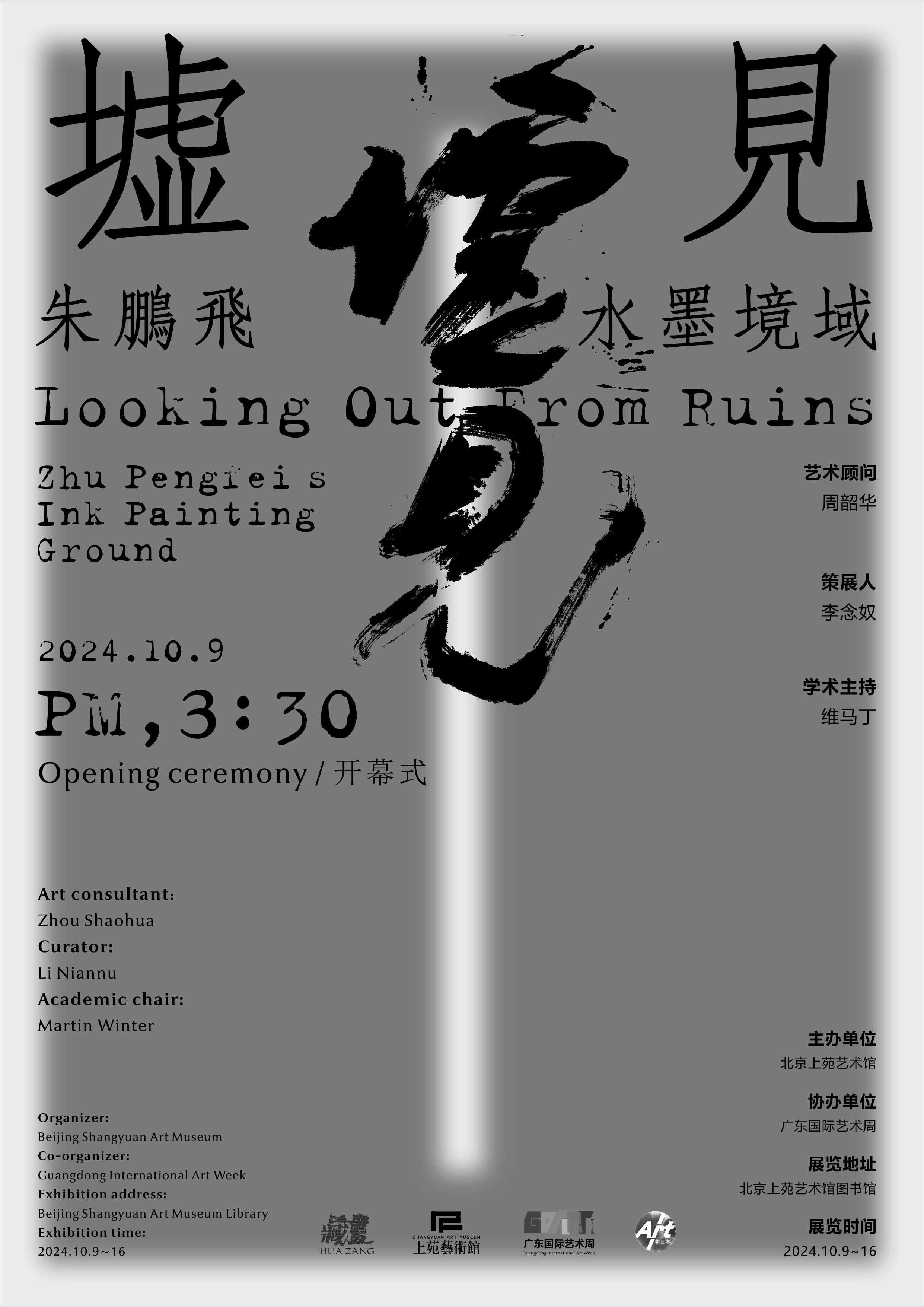
艺术顾问:周韶华
策展人:李念奴
学术主持:维马丁
主办单位:北京上苑艺术馆
协办单位:广东国际艺术周
展览地址:北京上苑艺术馆图书馆
展览时间:2024.10.9~16
开幕式时间:2024.10.9,下午3:30
Looking Out From Ruins:Zhu Pengfei's Ink Painting Ground
Art consultant:Zhou Shaohua
Curator:Li Niannu
Academic chair:Martin Winter
Organizer:Beijing Shangyuan Art Museum
Co-organizer:Guangdong International Art Week
Exhibition address:Beijing Shangyuan Art Museum Library
Exhibition time:2024.10.9~16
Opening ceremony:2024.10.9,pm3:30
墟见:记录与引领
李念奴
朱鹏飞一直是当代水墨领域的中坚分子之一。他早期从事传统水墨方面的创作和研究,后来应时而动,舍传统而就当代,遂有今日之面目与成就。他这一毅然决然地放弃与进入,在我看来不啻是一个壮举,也是一种冒险,这一举动让我们看到了他的艺术认知高度,他的艺术魄力和远见,也使我们隐约可见他的抱负和雄心。事实证明,在艺术上朱鹏飞是不甘平庸的,是有剑及履及的能力的,他是不多见的兼具理论和创作实践才能的艺术家,这一特点决定了其作品一向有深度,有创造性和进取意识,也决定了其在中国水墨的当代性尝试和当代艺术的在地性努力这一进程中成绩斐然,令人刮目相看。
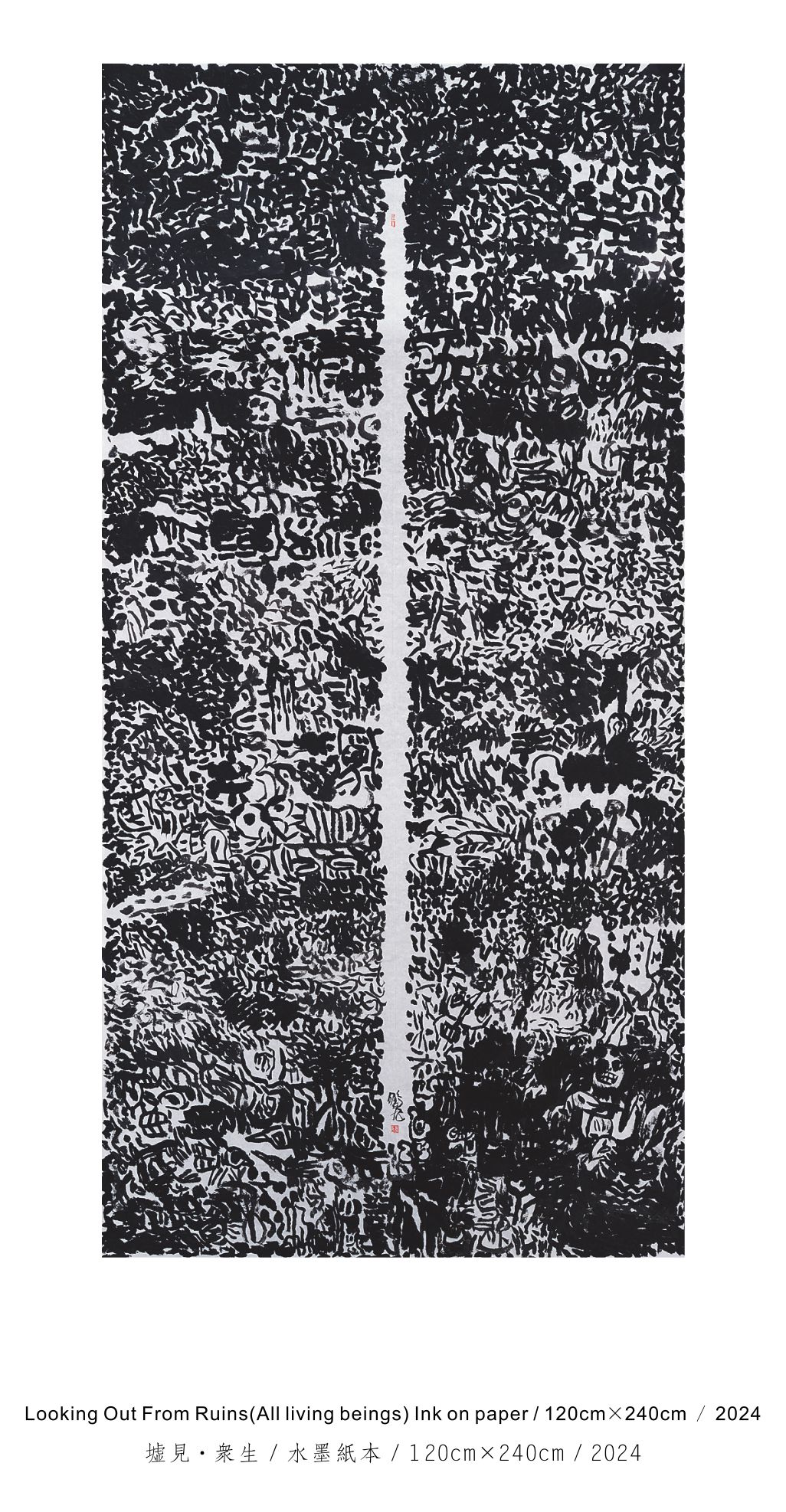
大概言之,艺术或从事艺术这一行为本身的意义体现在两个方面:一方面是对现实和现状的记录、再现与复述,甚或批判与研究,另一方面,是对非现实世界、未知世界的可能性分析与探寻,抑或召唤与引领。有的艺术属于前者,有的艺术属于后者,至于何去何从,则往往由艺术家本人的趣味、天赋及能力而定。而当我们关注朱鹏飞的艺术思考和实践时不难发现,很明显地,在他的作品中这两者兼而有之,且能有机统一,并行不悖。在本次展览中,他呈现给观者的这一组作品就非常有代表性地体现了这一点。
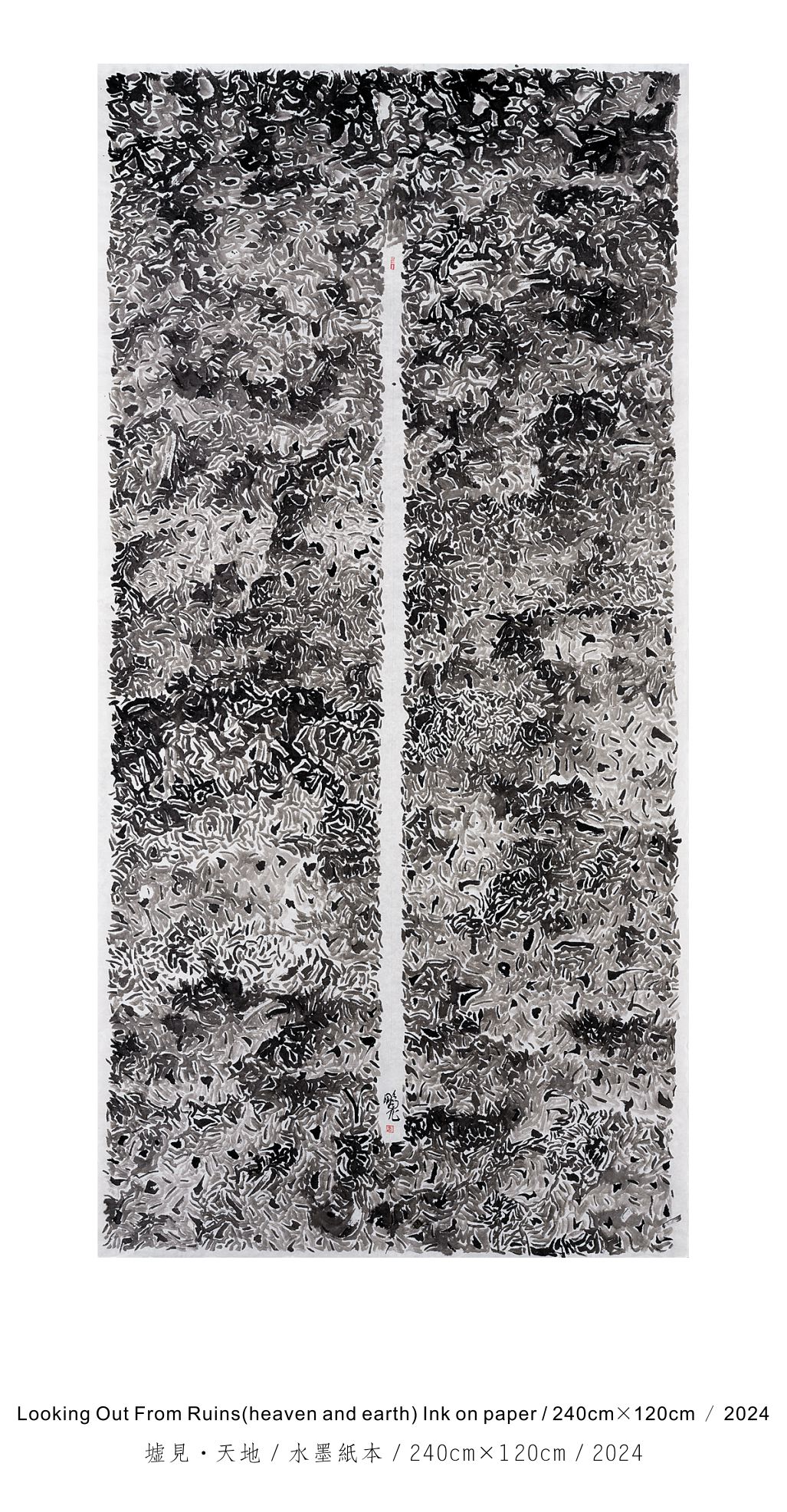
这是一组以“墟·见”为题的作品,这组作品与拆有关,与废墟有关,背景是今年发生在上苑艺术馆的强拆事件。“墟”是可见可感的事实,是现实,小而言之即指我们所遭遇经历者,大而言之可喻整个大环境和时代,我们每个人都身处其中的这个所谓当下。一切皆“墟”,无所不“墟”,黯淡荒芜之“墟”,金碧辉煌之“墟”,物质之“墟”,精神之“墟”,皆在在可见,如影随形。“墟”意味着坍塌,破碎,消亡,终结,伤害,死亡,失败,绝望,黑暗等等诸如此类的一切,而面对和承受这一切的我们,却惟有无力和无奈。对此种种“墟”之出现、存在及其后果,朱鹏飞了然于胸,他以高度抽象和符号化的方式为我们作了意味深长的记录,作了复盘式的另类再现。
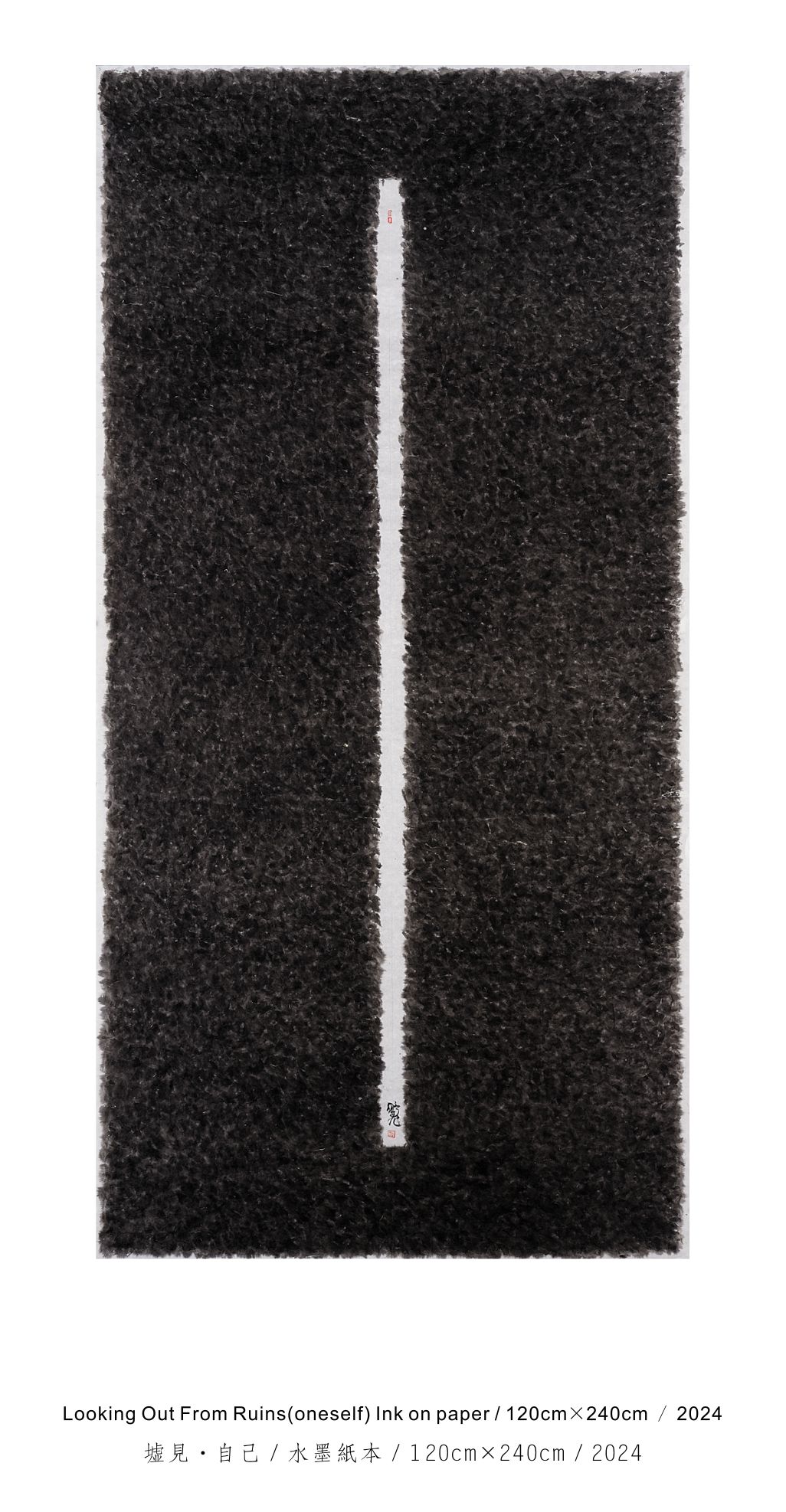
但是不仅如此,还有“见”。在我看来,朱鹏飞之“见”,不仅仅是看见存在和事实本身,它更多的是意味着对现实之“墟”真正意義上的理解和认知,意味着发现、机会和可能性,意味着对表象的超越和洞察、通透,意味着黑暗中能见光明,绝望中能见希望,悲伤中能见慰藉,困境中能见出路,不能中能见可能,虚弱中能见力量。意味着此岸与彼岸,浴火与涅槃,得救与新生。面对这些作品,在无边无际的混沌与纷杂之中,我们却总能有电光石火醍醐灌顶般的领悟。
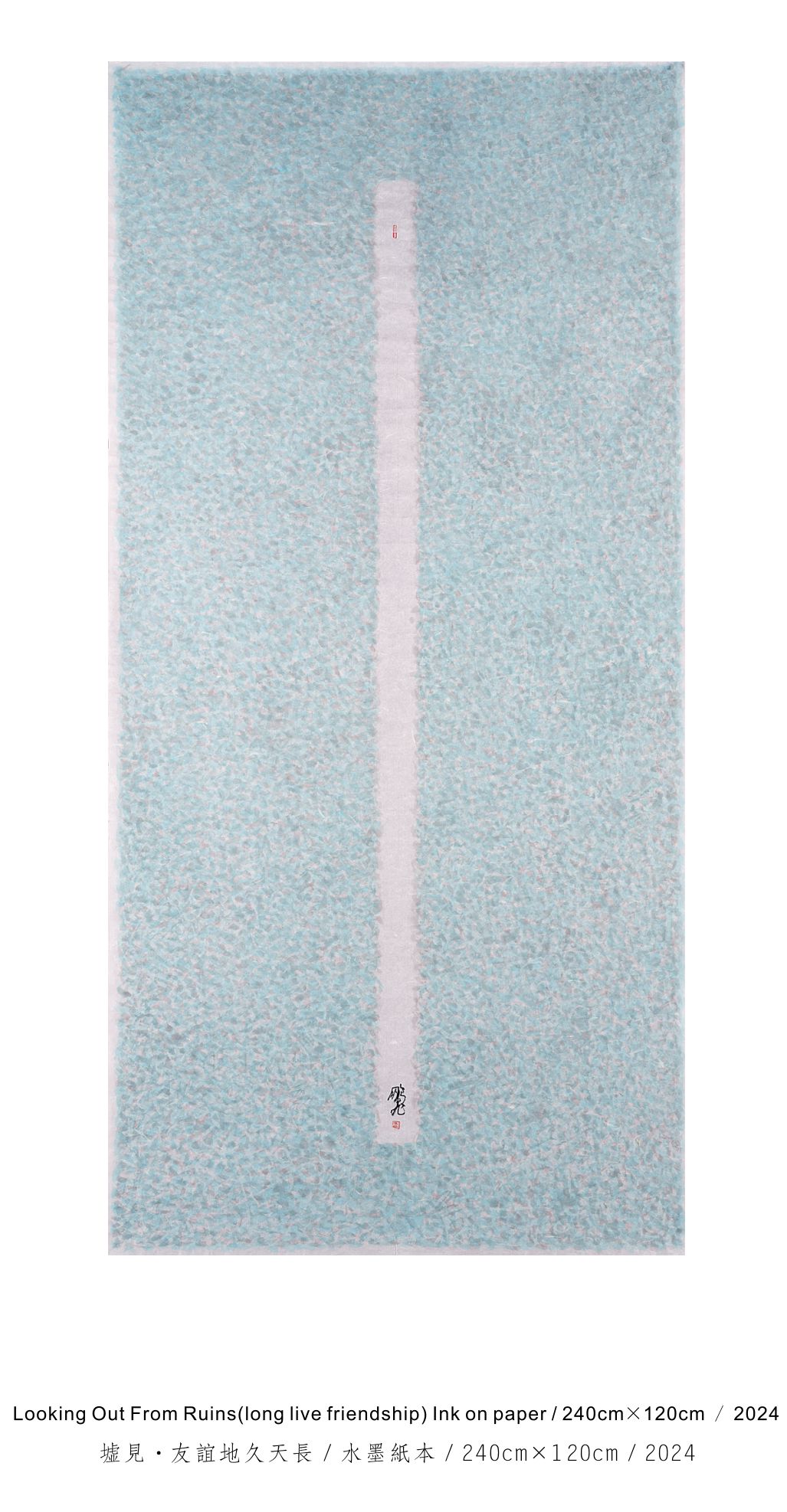
我觉得,这就是朱鹏飞在“墟·见”中想要传达给我们的。他的这一组作品,如一篇《启示录》。他不动声色地为我们展示并指出了一切,但是绝不解说。他寄望于我们的理解力。总的来说,对于这个“墟”之世界,对于我们,他是乐观的。
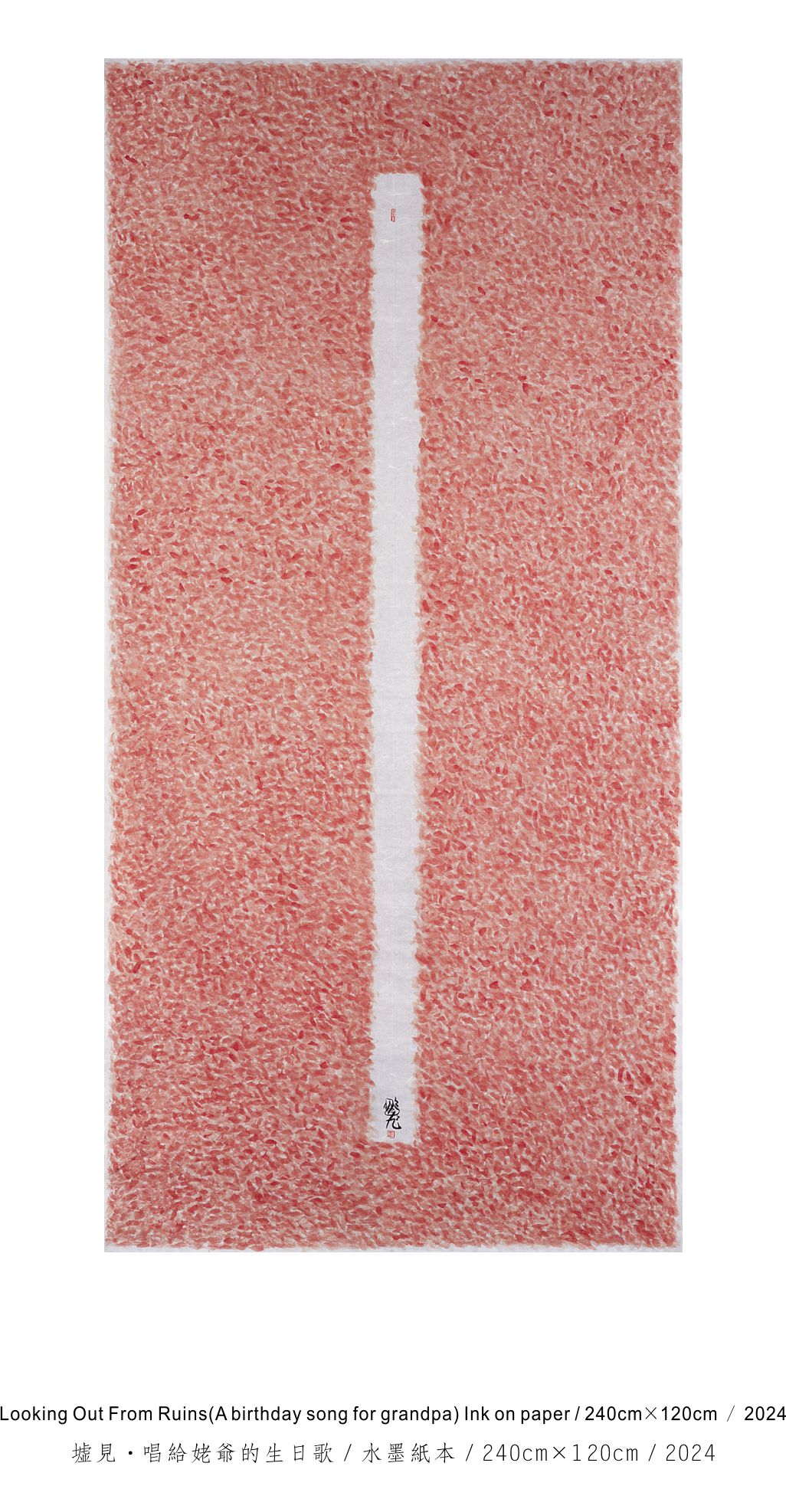
是的,我们有所见,有所思。愿我们因此受启发,能清醒直面废墟,直面现实,并得引领,进光明。
2024.9.1
Looking Out From Ruins:
To record and to guide
Li Nianlu
Zhu Pengfei has always been one of the stalwarts in the field of contemporary ink painting. In early years, he engaged in the creation and research of traditional ink painting. Later, adapted to the current situation, he abandoned the traditional painting method, changed to the contemporary ink painting method, thus achieving the face and achievements of today. His decision to give up and enter a new area, in my opinion, is not a feat, but also a kind of adventure. This movement lets us see his artistic cognition, artistic courage, artistic vision and his ambition vaguely. Those facts have proved that Zhu Pengfei is not willing to mediocrity in art, and has the ability to achieve the goal resolutely and quickly. He is a rare artist with both theoretical and practical abilities, which determines that his works have always been deep, creative and enterprising, and also determines that he has made remarkable achievements in the process of contemporary Chinese ink painting and contemporary art efforts in the local.
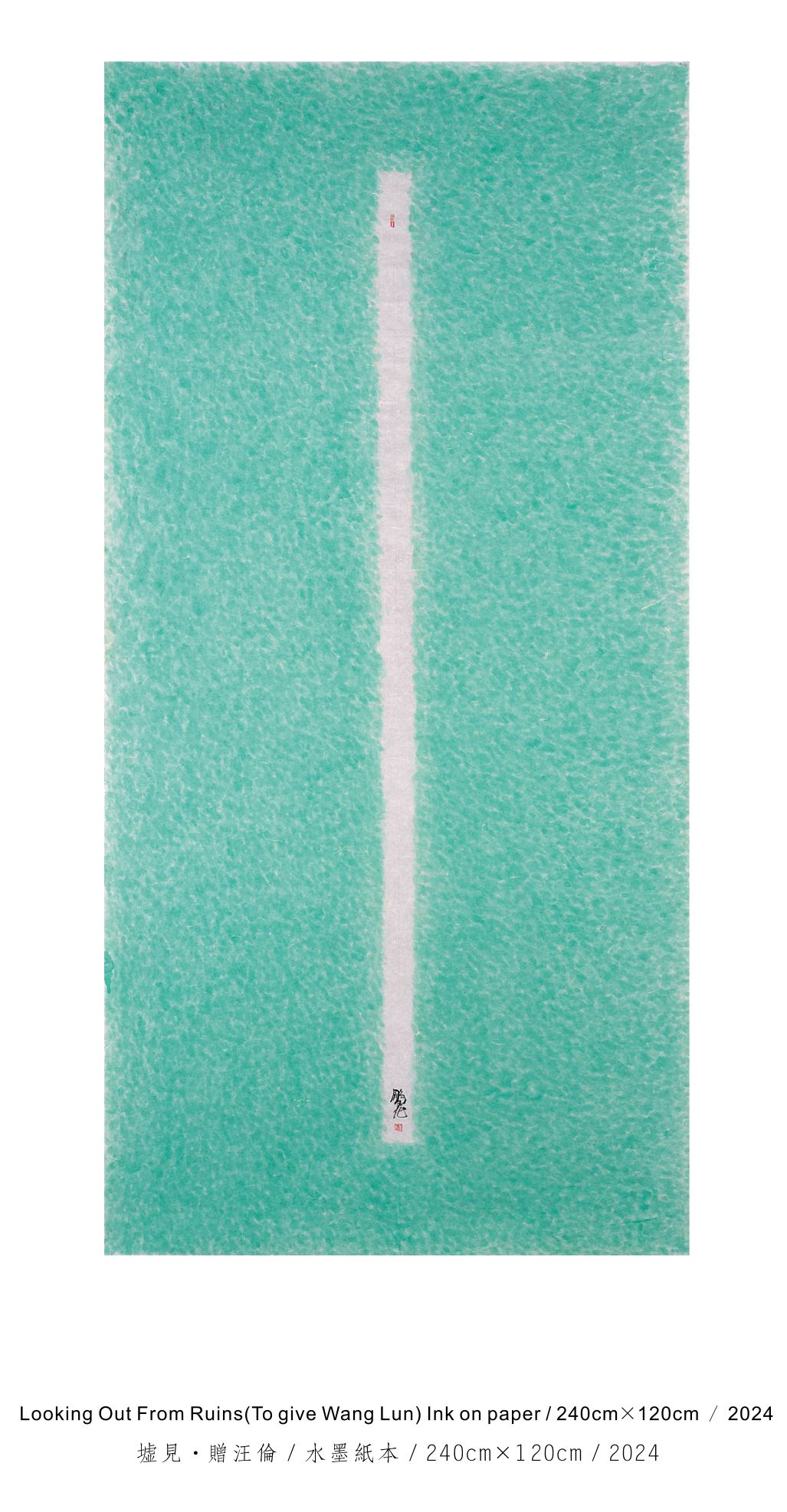
In a word, the meaning of art or the act of engaging in art itself is reflected in two aspects: on the one hand, it is to record, reproduce and retell the reality and status quo, or even criticize and study; on the other hand, it is to analyze and explore the possibility of the unreal world and the unknown world, or summon and lead. Some art belongs to the former, some to the latter, and where to go is often determined by the artist's own taste, talent, and ability. However, when we pay attention to Zhu Pengfei's artistic thinking and practice, we can obviously see that in his works, both of these can be organically unified and parallel. In this exhibition, the group of works he presents to the viewer is very representative of this point.
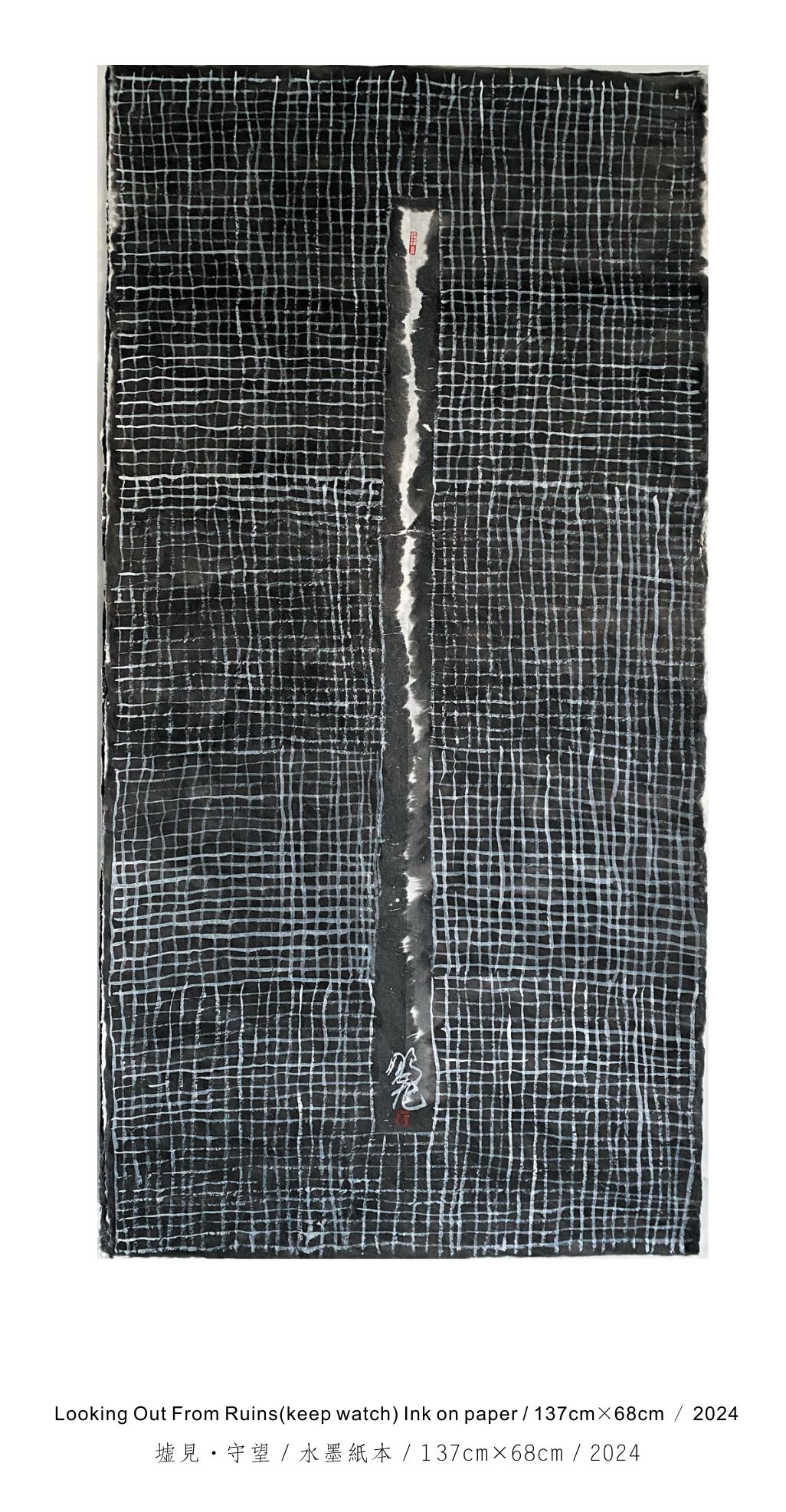
This is a group of works with the title of "Looking Out From Ruins", is related to demolition and ruins. The background of those works is the forced demolition incident that took place in the Shangyuan Art Museum this year. The "ruins" is a visible and perceptible fact and reality. From a small point of view, it refers to the people we have experienced. From a large point of view, it can be likened to the whole environment and era, in which each of us is in this so-called present moment. Everything is "ruins", everywhere is "ruins" ; "ruins" can be dim and dark, can be splendid and magnificent; "ruins" come from material and spirit, those mean “ruins” are seen everywhere, just like shadow. "Ruins" means collapse, broken, extinction, end, injury, death, failure, despair, darkness, and so on. Facing and bearing all these things, we are powerless and helpless.Zhu Pengfei is well aware of the emergence, existence and consequences of these "ruins". He has made meaningful records for us in a highly abstract and symbolized way, and has made an alternative reproduction in the form of a duplicate.
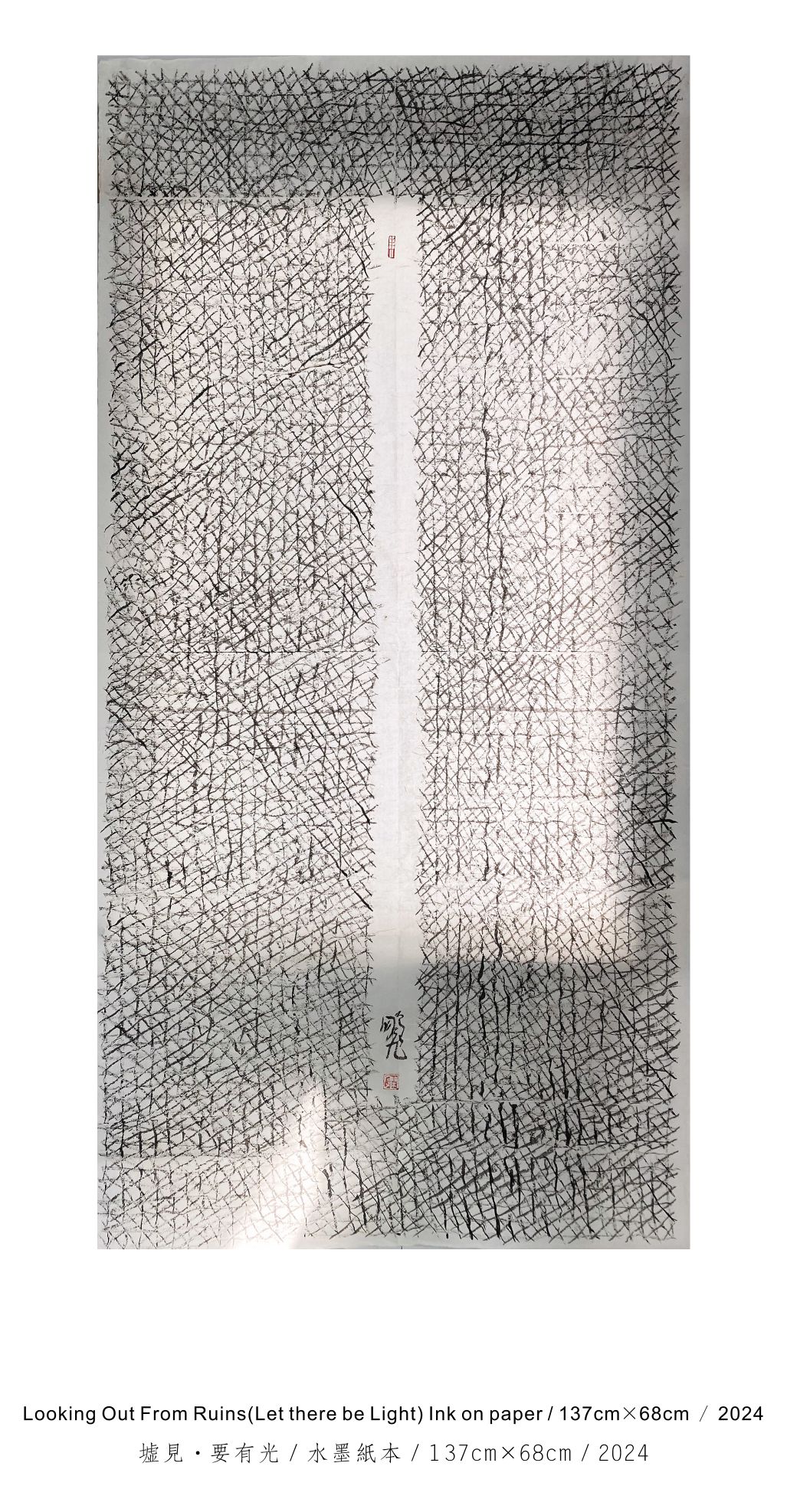
However, what i want to talk about not only the “ruins”, but also the "looking". In my opinion, Zhu Pengfei's "looking" is not only to see existence and facts themselves, but also to understand and recognize the "ruins" of reality in the true sense, meaning discovery, opportunity and possibility, meaning transcendence and insight into appearances, transparency, meaning that light can be seen in darkness, hope can be seen in despair, solace can be seen in sadness, and solutions can be seen in difficulties. In the weak we see the possible, in the weak we see the strength. It means here and there, fire and nirvana, salvation and new birth. In the face of these works, the endless chaos and distracting, we can always have that was sobering realization.
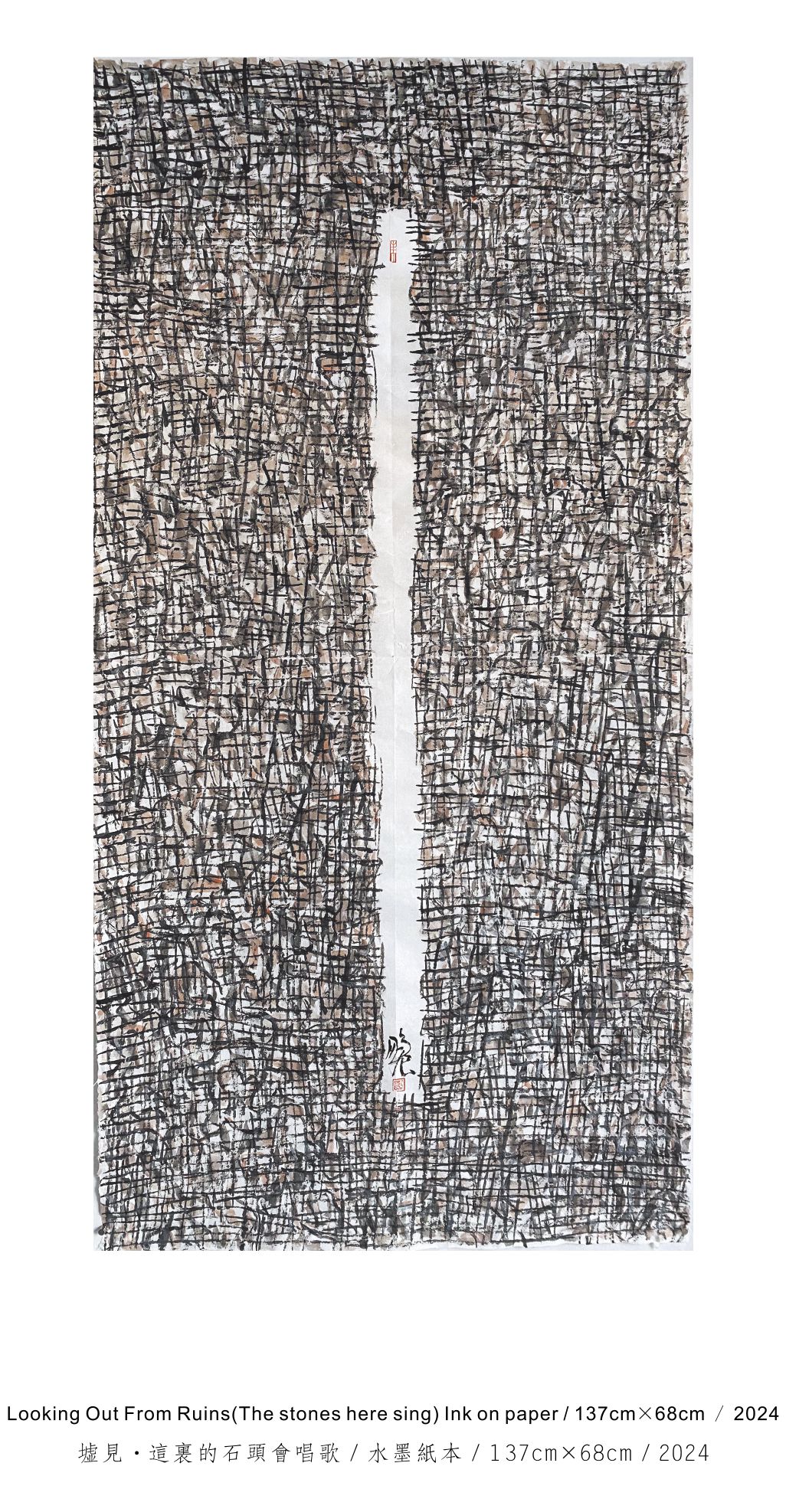
I think this is what Zhu Pengfei wants to convey to us in "Looking Out From Ruins". This group of his works, such as the Book of Revelation. Quietly, he shows us everything and his points, but never explains it. He trusts in our understanding. In general, he is optimistic about the "small" world, and about us.
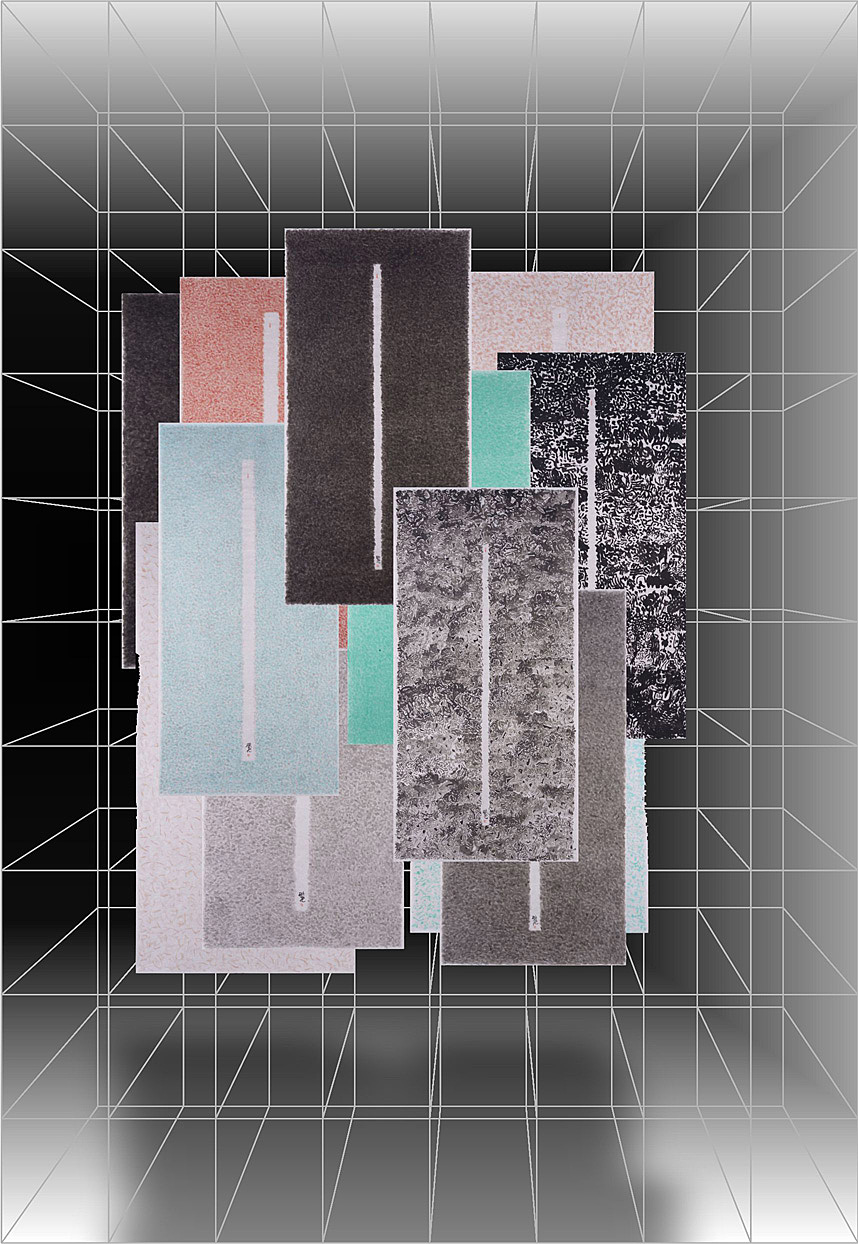
Yes, we see and we think. May we be inspired to wake up to the ruins, to face reality, and to lead into the light.
2024.9.1

网友评论仅供其表达个人看法,并不表明本站同意其观点或证实其描述。